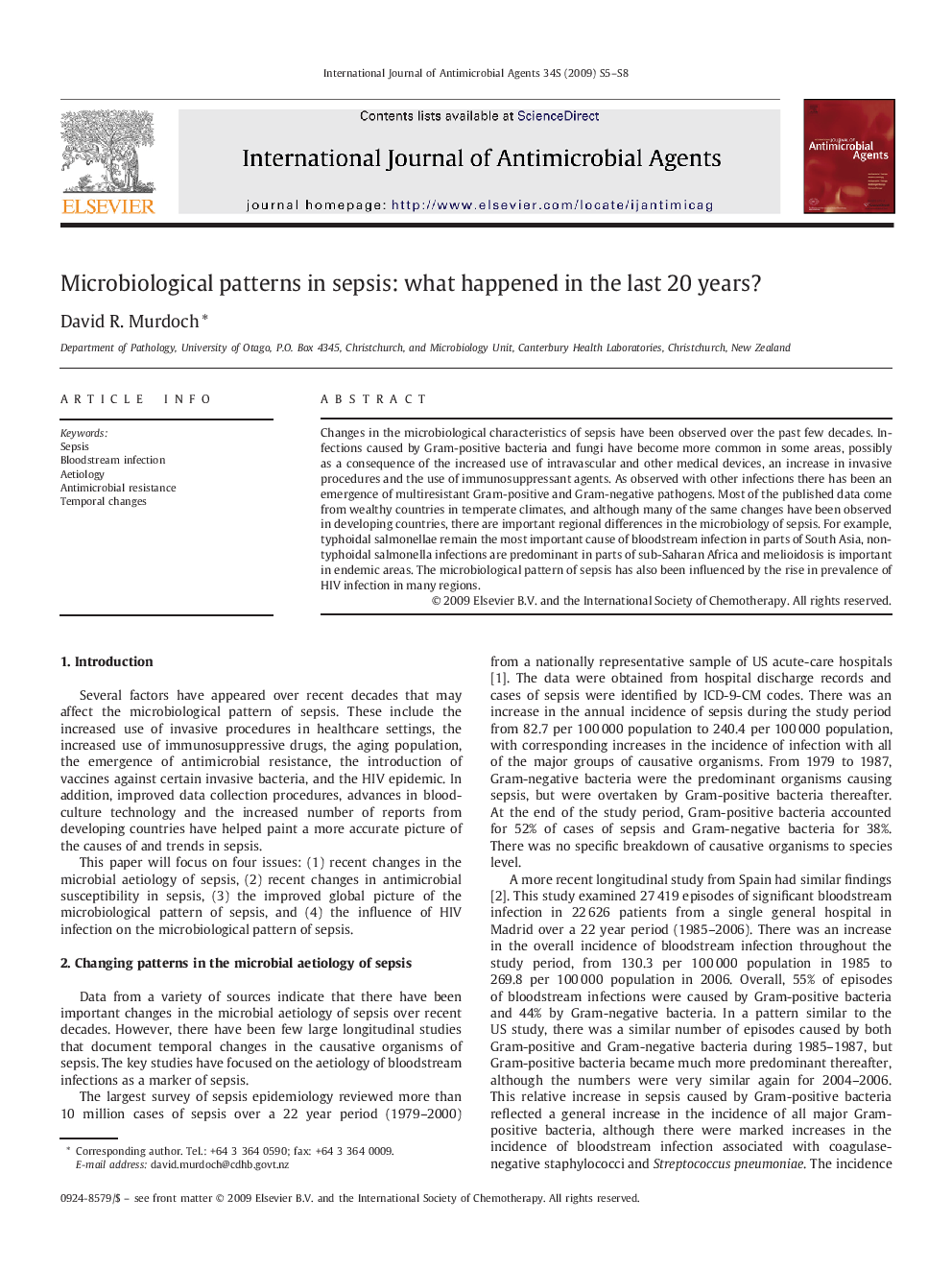| Article ID | Journal | Published Year | Pages | File Type |
|---|---|---|---|---|
| 3359825 | International Journal of Antimicrobial Agents | 2009 | 4 Pages |
Changes in the microbiological characteristics of sepsis have been observed over the past few decades. Infections caused by Gram-positive bacteria and fungi have become more common in some areas, possibly as a consequence of the increased use of intravascular and other medical devices, an increase in invasive procedures and the use of immunosuppressant agents. As observed with other infections there has been an emergence of multiresistant Gram-positive and Gram-negative pathogens. Most of the published data come from wealthy countries in temperate climates, and although many of the same changes have been observed in developing countries, there are important regional differences in the microbiology of sepsis. For example, typhoidal salmonellae remain the most important cause of bloodstream infection in parts of South Asia, nontyphoidal salmonella infections are predominant in parts of sub-Saharan Africa and melioidosis is important in endemic areas. The microbiological pattern of sepsis has also been influenced by the rise in prevalence of HIV infection in many regions.
